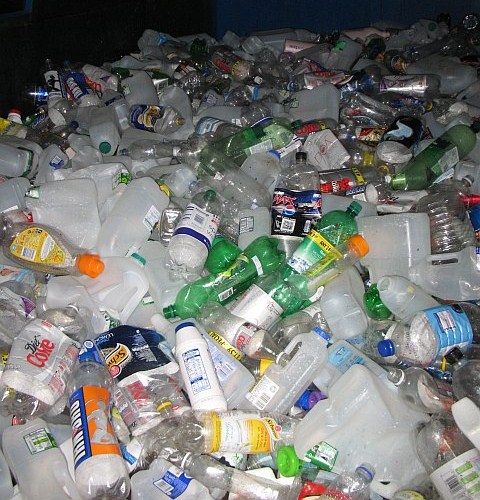How to press/compact plastic bottles (PET Bottles) without any expansion

Bottles made of polyethylene terephthalate (PET, sometimes PETE) can be "recycled" to reuse the material out of which they are made and to reduce the amount of waste going into landfills. PET is semi-porous and absorbs molecules of the food or beverage contained, and the residue is difficult to remove: Heating the plastic enough for sterilization would destroy it. Therefore, most recycled bottles are used to make lower grade products, such as carpets.[citation needed] To make a food grade plastic, the bottles need to be hydrolyzed down to monomers, which are purified and then re-polymerized to make new PET. In many countries, PET plastics are coded with the resin identification code number "1" inside the universal recycling symbol, usually located on the bottom of the container. PET is used as a raw material for making packaging materials such as bottles and containers for packaging a wide range of food products and other consumer goods. Examples include soft drin

